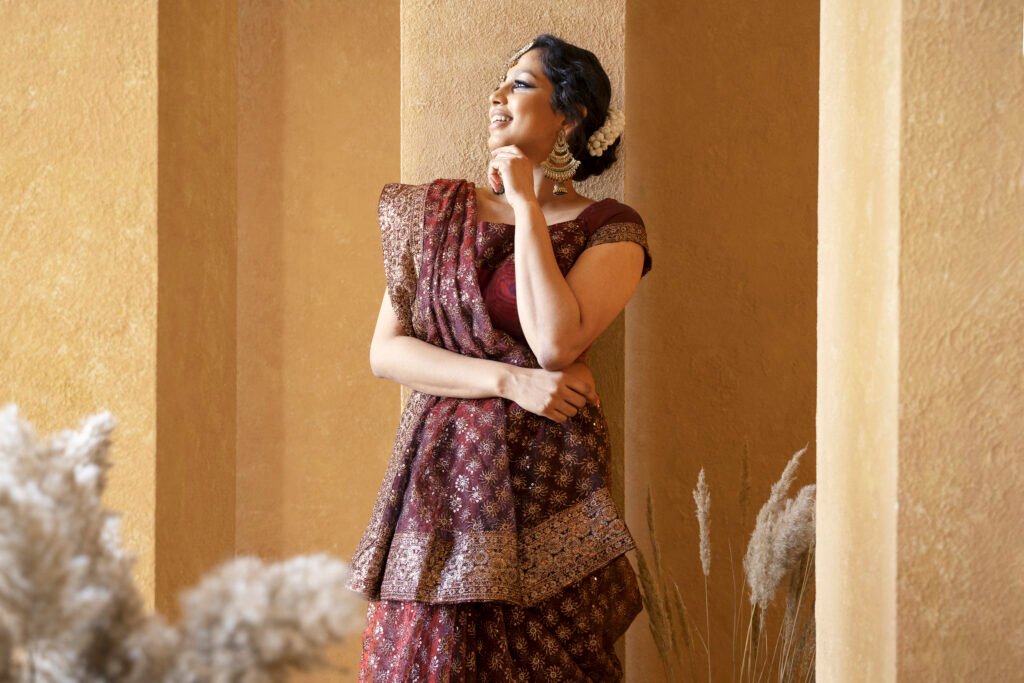The saree, a timeless symbol of elegance and grace, has been an integral part of Indian culture for centuries. Its versatility allows it to be styled in numerous ways, each reflecting a unique blend of tradition and modernity. Lushmakeovers, a renowned name in the beauty and fashion industry, has been at the forefront of redefining saree draping styles, offering a fresh perspective on this classic attire. In this blog, we will delve into various saree draping styles curated by Lushmakeovers, exploring how they enhance the beauty and charm of this exquisite garment.

The Nivi drape is perhaps the most recognized and widely worn style of saree draping. Originating from Andhra Pradesh, this style is known for its simplicity and elegance. Lushmakeovers adds a modern twist to the traditional Nivi by incorporating innovative pleating techniques and accessorizing with statement belts or jewelry. This style is perfect for any occasion, from weddings to casual gatherings, offering a blend of comfort and sophistication.
The Bengali style is characterized by its wide pleats and the way the pallu is draped over both shoulders. This style exudes a regal aura and is often associated with traditional festivities. Lushmakeovers enhances this look by using rich fabrics like silk or Banarasi sarees, adding intricate embroidery or zari work to accentuate its grandeur. This saree draping style is very unique and you can try this at various functions.
Also known as the Seedha Pallu style, this drape is popular in Gujarat and Rajasthan. It involves bringing the pallu from back to front over the right shoulder, showcasing intricate designs on the saree’s pallu. Lushmakeovers suggests using vibrant colors and bold patterns to make this style stand out. This saree draping style is a very versatile drape.
The Nauvari saree drape is unique due to its dhoti-like appearance, often worn without an underskirt (petticoat). This style is traditional in Maharashtra and is associated with strength and resilience. Lushmakeovers revamps this look by incorporating contemporary elements such as modern blouses or fusion accessories. This saree draping style is very cool you can try this at your college parties.
This traditional saree draping style from Kerala involves wearing a two-piece garment that resembles a saree but offers more flexibility in draping. Lushmakeovers suggests using light cotton fabrics that are ideal for tropical climates, often adorned with golden borders for an elegant finish.
For those who love fusion fashion, the lehenga style drape combines elements of both lehenga and saree. This involves pre-pleating or layering the saree around like a lehenga skirt while keeping the pallu free-flowing. Lushmakeovers recommends using this style for weddings or festive occasions where you want to make a bold statement. This saree draping style looks very good at wedding functions, try this and ace the look.
A modern take on traditional draping, the pant style involves wearing pants or leggings instead of a petticoat, giving you freedom of movement while maintaining elegance. Lushmakeovers suggests pairing this look with chic blouses or crop tops for an edgy appearance.
Saree draping is an art form that allows women to express their individuality while honoring tradition. With styles ranging from classic to contemporary, Lushmakeovers offers endless possibilities for reinventing this timeless garment. Whether you’re attending a wedding, celebrating a festival, or simply embracing cultural attire in daily life, these styles provide inspiration for every occasion. Try our different Saree Blouse Designs.
By experimenting with different drapes, fabrics, and accessories, you can create looks that are uniquely yours while paying homage to India’s rich sartorial heritage. Embrace these styles by Lushmakeovers and let your saree tell its own beautiful story!